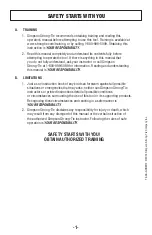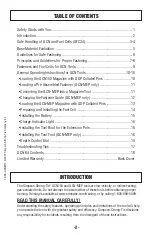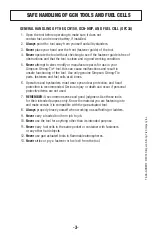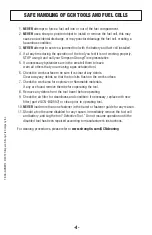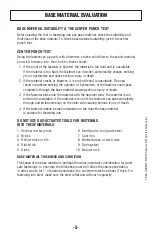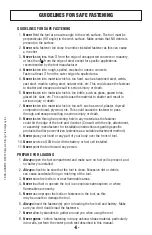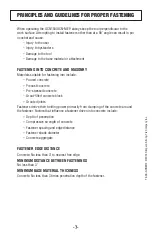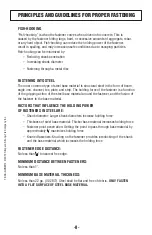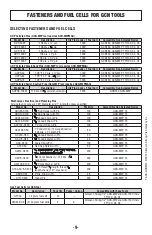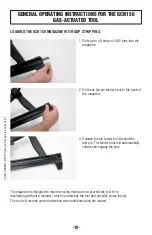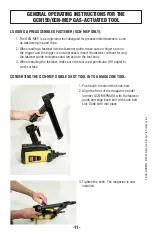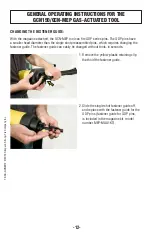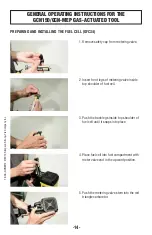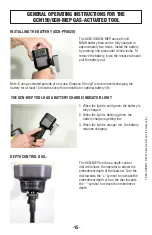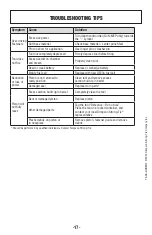
T-SAS-GCNM12 ©
2012 Simpson Strong
-T
ie Company Inc.
-8-
PRINcIPLES ANd gUIdELINES fOR PROPER fASTENINg
FISH-HOOKING
“Fish-hooking” is when the fastener curves when driven into concrete. This is
caused by the fastener hitting large, hard, or excessive amounts of aggregate, rebar,
or any hard object. Fish-hooking can reduce the holding power of the fastener,
result in spalling, and may increase unsafe conditions due to escaping particles.
Fish-hooking can be minimized by:
– Reducing shank penetration
– Increasing shank diameter
– Fastening through a metal disc
FASTENING INTO STEEL
The most common type of steel base material is structural steel in the form of beam,
angle iron, channel, tee, plate, and strip. The holding force of the fastener is a function
of the gripping action of the steel base material around the fastener, and the fusion of
the fastener to the base material.
FACTORS THAT INFLUENCE THE HOLDING POWER
OF FASTENERS IN STEEL ARE:
– Shank diameter: Larger shank diameters increase holding force
– Thickness of steel base material: Thicker base material increases holding force
– Fastener point penetration: Getting the point to pass through base material by
approximately
1
⁄
4
" maximizes holding force
– Knurled fasteners: Knurling on the fastener provides interlocking of the shank
and the base material which increases the holding force
FASTENER EDGE DISTANCE:
No less than
1
⁄
2
" to nearest free edge.
MINIMUM DISTANCE BETWEEN FASTENERS:
No less than 1".
MINIMUM BASE MATERIAL THICKNESS:
No less than 22 ga. (0.0283"). Steel shall be flat and free of debris.
ONLY FASTEN
INTO A FLAT SURFACE OF STEEL BASE MATERIAL.


